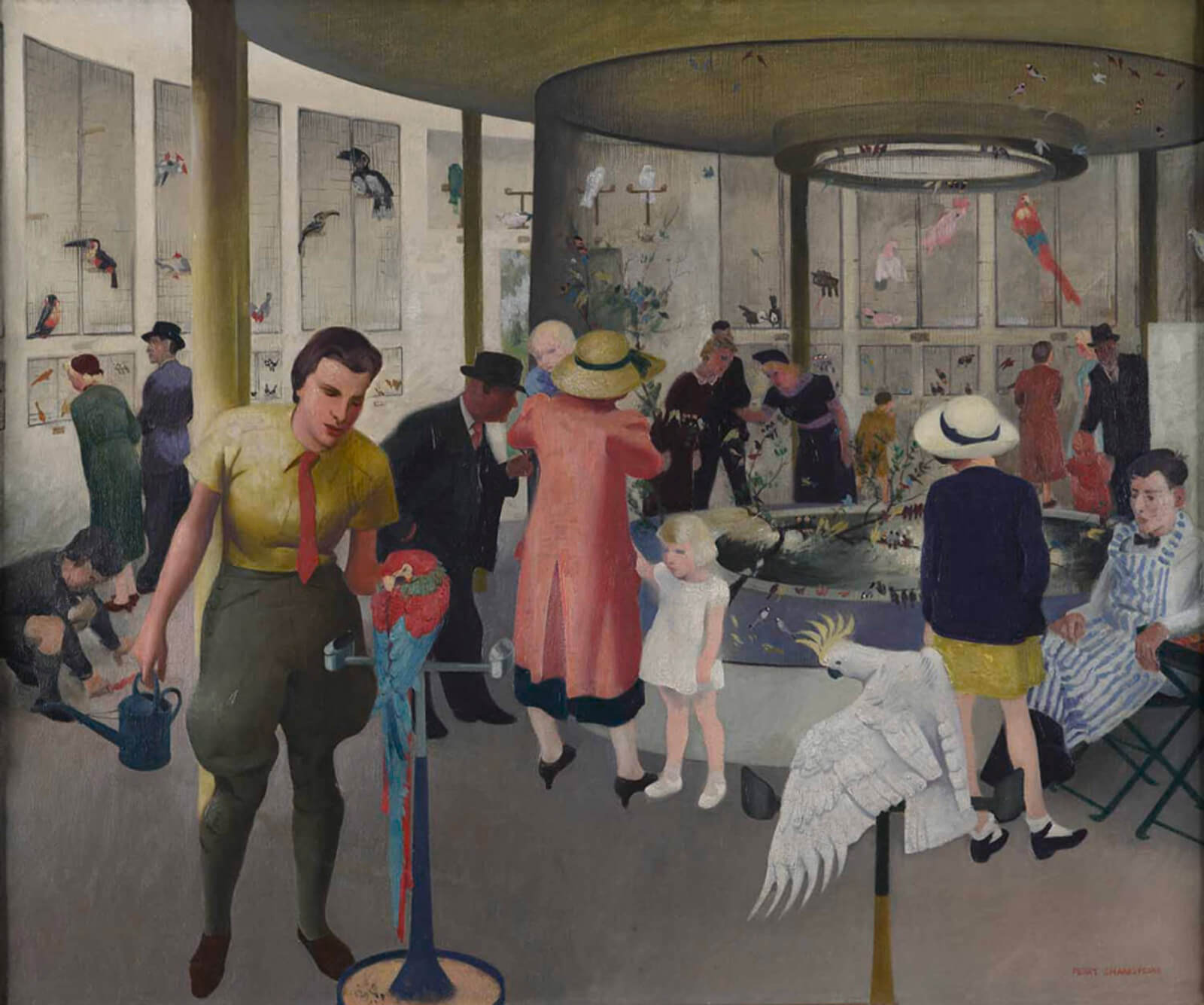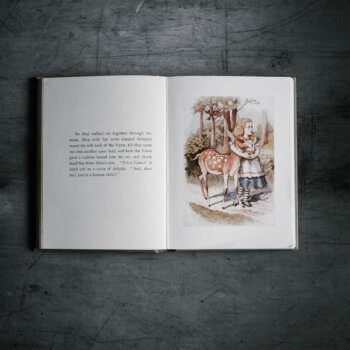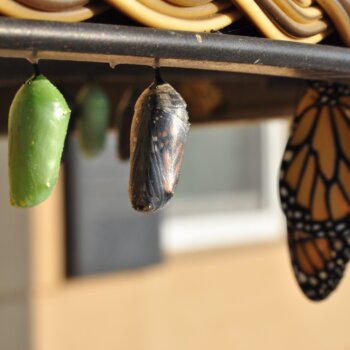In May 1937, hundreds of thousands of people gathered in the quiet town of Dudley, England for the grand opening of a new zoo. Throngs of visitors battled for entry for a space that could hold 50,000 a day, leaving many disappointed. Those lucky enough to gain entry would have seen the wonders of modern architecture on full display, all in service to the many animals that called this place home.
However, did the animals like their new modernist quarters? Probably not!
Today, zoos often go to great lengths to build eco-friendly and comfortable habitats for their animals. They are not just spaces for humans to visit but are also places for research, education, and rehabilitation. However, in the early 20th century zoos were often more spectacle than substance, sometimes to the detriment of the animals.
The story of Dudley Zoo and Castle is about architectural innovation, modern zoo-keeping, and how difficult it can be for both to coexist. Today, an international awareness campaign, as well as financial support from the Getty Foundation and others, is finally restoring peace between man and beast.
Royalty and a Radical Architect
In the early 1930s, William Humble Eric Ward, the Third Earl of Dudley, decided he wanted his ancestral lands to house more than just a medieval castle–he wanted to build a zoo on them. Tackling such a project would be difficult since the terrain around the castle was steep and porous with caverns, where limestone had been mined. Building a zoo at Dudley would require, therefore, an imaginative architect who could rewrite the rules of architecture for such a challenging site.


The earl found this architect in Berthold Lubetkin, a Soviet émigré who was one of the founders of the Tecton Group. This group, established in 1932, proposed pioneering modernist approaches to architecture across the U.K., transforming concrete into sweeping architectural forms called Tectons that seemed to defy gravity. At the time, Lubetkin had just completed the popular Penguin Pool at the London Zoo, which included entwined, curved platforms with lots of waddle room for the birds.


According to a report about the Tectons on the site, “The sloping site enabled access behind the enclosure where a long observation window was set into the opposite side of the building, enabling visitors to watch the birds swimming underwater.”
Two years after its conception, Dudley Zoo opened to the public. Lubetkin and his team had completed 13 buildings, among them a bear ravine, sea lion pool, elephant house, tropical bird house, reptile pit, lion, tiger and polar bear enclosures (oh my!), a number of kiosks and restaurants, and its very own penguin pool. Visitors could marvel at the zoo’s simple and elegant modern structures while enjoying unobstructed views of the animals.

According to a conservation report about the site, together the Tectons formed “arguably the most complete set of buildings of the Modern Movement in the U.K.” The buildings were so renowned that painter Percy Shakespeare memorialized the tropical bird house in one of his paintings, which is now owned by the Dudley Metropolitan Borough Council. Today, they are on England’s National Heritage List.

Man vs. Beast
At the time, Lubetkin described his approach to zoo architecture as “designing architectural settings for the animals in such a way as to present them dramatically to the public, in an atmosphere comparable to that of a circus.” This approach, which placed the entertainment of the visitors above the health and well-being of the animals, is not in line with contemporary zoo-keeping standards.
The zoo used and maintained Lubetkin’s Tectons for decades, but due to the quality of the building, issues with the structures were constant. As the curved concrete began breaking off or cracking, repairs were improvised and unattractive. The metal rebar used to reinforce the concrete shapes was corroding. Some structures became dangerous–for example, the viewing platform at the bear ravine was wobbly and at risk of collapse.
However, the biggest problem was that the enclosures, while breathtaking in their simplicity and originality, were not the best places for the animals to live. The indoor animal accommodations were functional, though in most cases the spaces were too small for the species they were designed to house. To counter this issue, the Zoo brought in other species and tried different space solutions, including creating new indoor accommodations adjacent to the outdoor areas.

Over time, many of the Tecton buildings were retired from housing animals, and either sat empty or were converted to other uses. Severe and irreparable leaks plagued the penguin pool, and it was demolished in 1979, leaving 12 of the 13 Tectons remaining.
Living in Harmony at Last
As new buildings were constructed that were better suited for the animals, the legacy of Lubetkin’s Tectons was uncertain.
“The majority of visitors don’t actually know they’re significant because they’re 80 years old and have deteriorated,” said Derek Grove, director of Dudley Zoo and Castle, “Visitors always comment that they need a coat of paint.”
However, the Zoo staff, dedicated architects, and local residents have fought to keep the buildings. The remaining 12 Tecton buildings were placed on the World Monuments Fund’s watch list in 2009, and an awareness campaign helped communicate the urgent need for preservation.
Between 2012 and 2016, several Tectons were repaired with help from the Dudley and West Midlands Zoological Society and the Heritage Lottery Fund. This enabled U.K.-based Bryant Priest Newman Architects to create a conservation management plan for the future care of the buildings.
Many of the Tectons can still be adapted to house animals, though not necessarily the animals they were originally designed for. For example, the reptile pit is now home to a gang of meerkats, and Zoo staff expects that even more buildings can be adapted for other animals once they have been repaired and made suitable for their habitation.
“The elephant house is one of the buildings we’re looking at restoring, which closed about 20 years ago. The idea is that we would use it as primate housing,” said Grove.
In 2020, the zoo received support from the Getty Foundation through its Keeping It Modern initiative to build on the conservation management plan. The project team is doing the research and preparation needed to restore long-term operations to the Elephant House, and for our own species, the Education Centre, and the Queen Mary Café.

Dudley Zoo recently reopened after COVID-19 closure and remains one of the largest tourist draws in the region. Critical repairs, fresh paint, and new uses are giving some of the magnificent Tectons there a new life, and zoo staff and visitors will have even more opportunities to talk and walk with the animals. It’s a wild tale, but one that ends in harmony.





























